Monomineralic rocks, as the name suggests, are rocks that are composed of only one mineral. Majority of rocks are composed of several different minerals and absolutely pure monomineralic rocks do not exist in nature anyway. But some of them are reasonably ‘pure’ to be called monomineralic.
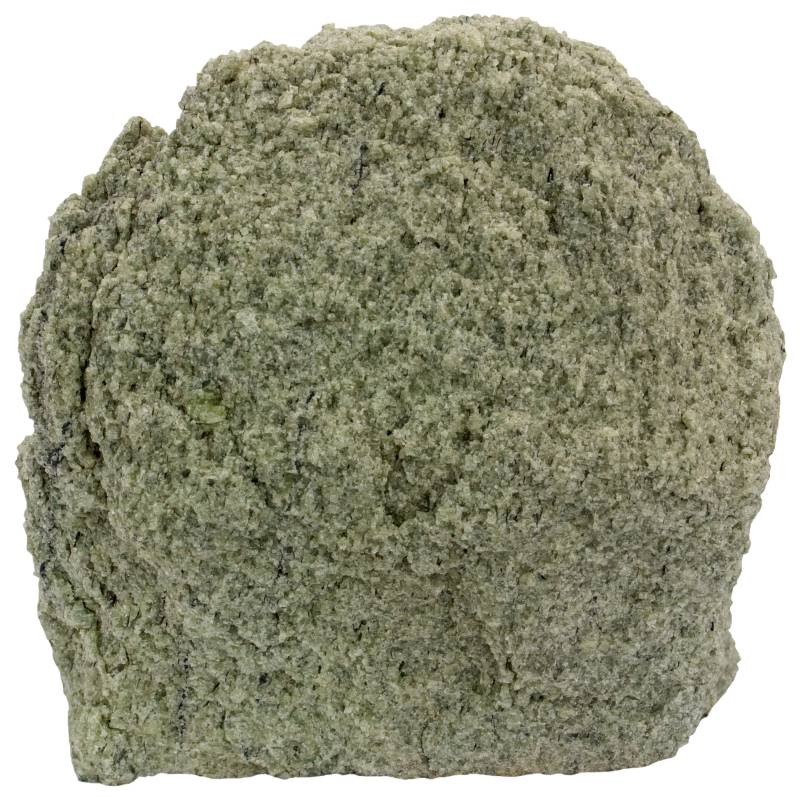
Dunite is composed of almost pure forsterite. Gusdal Quarry, Møre og Romsdal, Norway. Width of sample 9 cm.
How pure exactly do they need to be is something that is not set in stone but in several cases 10% is arbitrarily chosen as the lower purity standard. Especially among igneous rocks where the term ‘monomineralic’ is most often used. Examples of monomineralic igneous rocks are dunite (more than 90% olivine) and anorthosite (more than 90% plagioclase feldspar).
Common monomineralic metamorphic rocks are marble and quartzite although they do not need necessarily to be monomineralic. Similar is the situation with their sedimentary protoliths – limestone and sandstone which may be very pure. This is the most important difference between most igneous monomineralic rocks (which need to be more than 90% pure to earn its name) and sedimentary and metamorphic rocks. There are some exceptions, though. A rare igneous rock carbonatite may be almost monomineralic but is often not. It only needs to be more than 50% carbonate to be named that way. So it is very similar to sedimentary carbonate rock limestone that is also at least 50% carbonate. Pyroxenite is another example of often almost monomineralic igneous rock although it may contain up to 40% of olivine in addition to pyroxene group minerals.
So we can talk about ‘true’ monomineralic rocks that need to be pure and monomineralic rocks that only may be pure (their classification principles allow that) but do not have to be.
Dunite is an igneous rock made of olivine (over 90%). Dunite is relatively rare rock type on the surface but very common deep in the mantle. Dunite may be mined as a mineral resource because olivine has some industrial applications. Especially useful is its high melting temperature which makes it a good refractory material. The sample above is collected from a working olivine quarry.
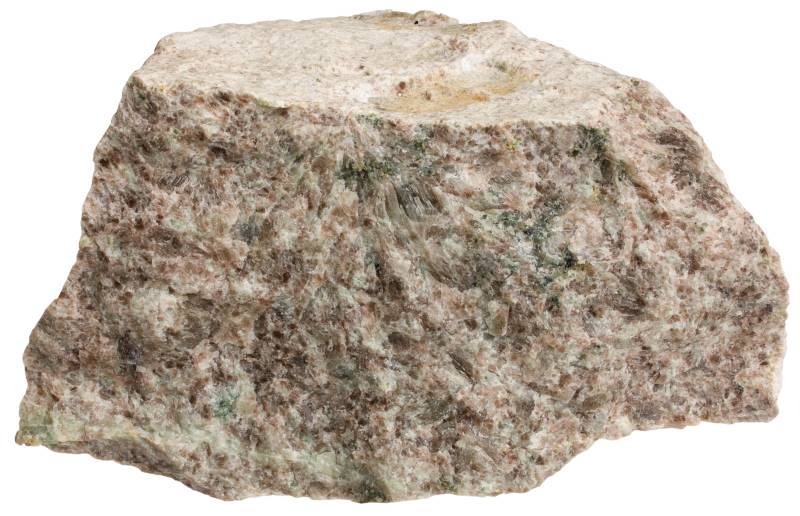
Anorthosite. Rogaland, Norway. Width of sample 13 cm.
Anorthosite is a common rock type on the Moon where the highlands surrounding the darker maria are composed of this rock type. But it also occurs here on Earth although it is not distributed as widely here. The existence of this rock type is no accident because its constituent mineral plagioclase feldspar is the most common mineral in the Earth’s crust.
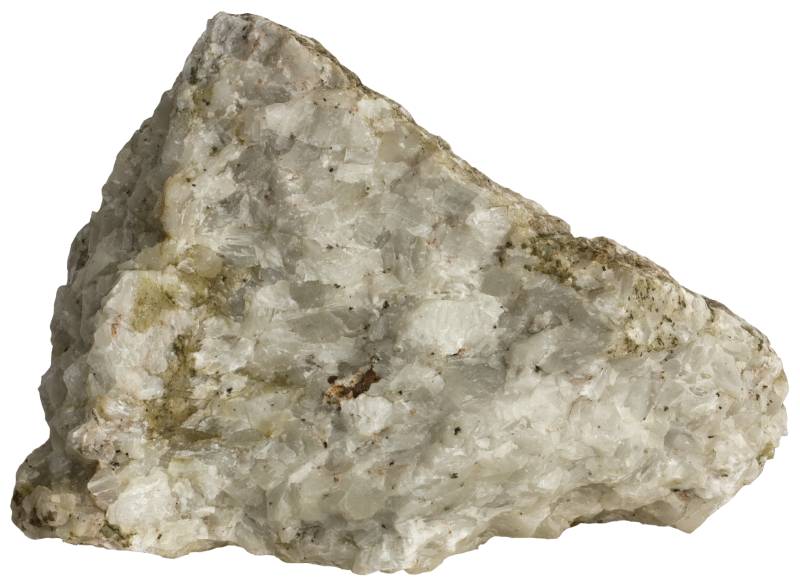
Carbonatite (sövite). Alnö Island, Sweden. Width of sample 8 cm.
Carbonatite is a rare igneous rock with an exotic composition. It is composed of carbonate minerals (>50%) which makes it compositionally very similar to sedimentary limestone and metamorphic marble. Its appearance may also very much resemble that of marble.

Pyroxenite. Aust-Agder, Norway. Width of sample 8 cm.
Pyroxenite is an ultramafic rock just as dunite. It may contain significant amount of olivine (up to 40%) but the sample above is mostly composed of almost pure clinopyroxene.
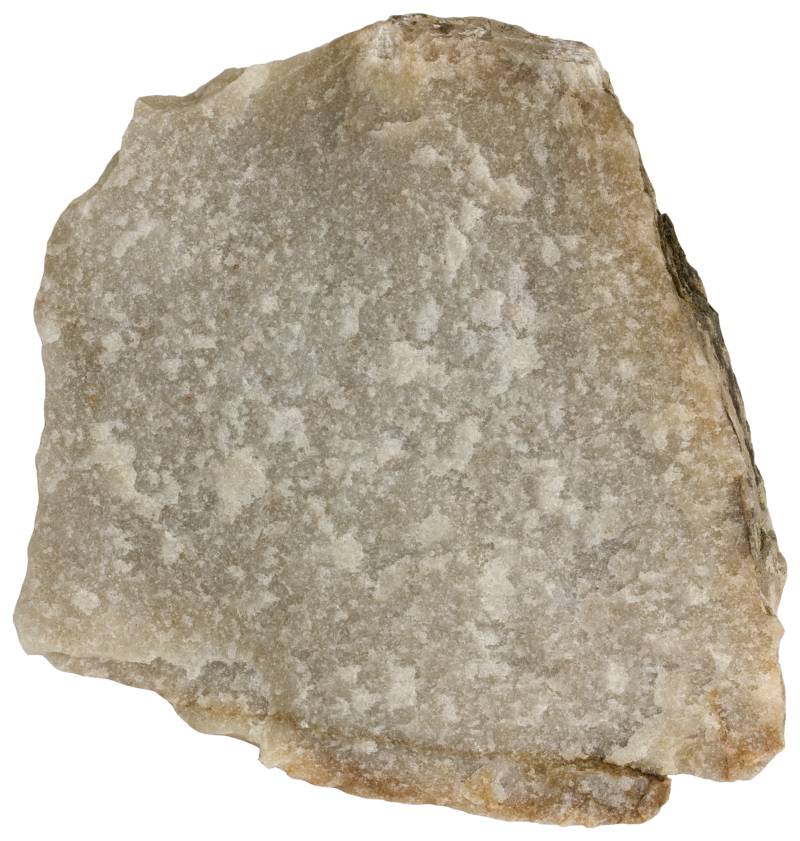
Quartzite. Telemark, Norway. Width of sample 9 cm.
Quartzite is a common metamorphic rock just as its sedimentary protolith sandstone. Many quartzite samples are composed of almost pure interlocking mass of fused quartz grains just as the sample above.

Marble. Baikal, Siberia. Width of sample 12 cm.
Marble is a metamorphosed limestone that may contain significant amount of impurities but almost pure marbles are common also.
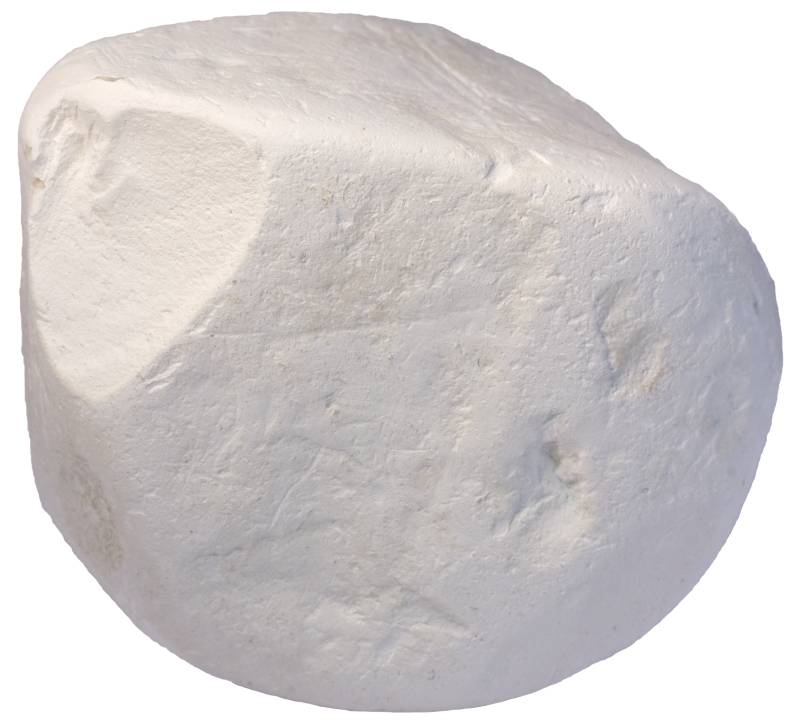
Chalk. Width of sample 6 cm.
Chalk is a type of limestone that is composed of calcitic exoskeletons of coccolithophores.